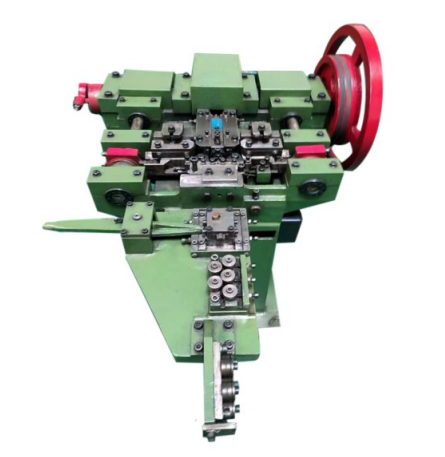1. What is a Wire Nail Making Machine?
A Wire Nail Making Machine is an industrial device designed to manufacture nails from wire stock. It automates the process of cutting, shaping, and forming nails, significantly improving productivity and consistency.
2. How does a Wire Nail Making Machine work?
The process generally involves several steps:
Wire Feeding: The wire is fed into the machine.
Cutting: The wire is cut to the desired length.
Pointing: A pointed end is formed on one side of the nail.
Straightening: The wire is straightened to ensure the nail is uniform.
Head Forming: A head is formed on the other end of the nail using a die and punch.
Ejecting: The finished nail is ejected and collected.
3. What types of nails can be made?
Wire Nail Making Machines can produce a variety of nails, including common nails, finishing nails, and specialized nails like masonry nails, depending on the machine's capabilities and tooling.
4. What materials can be used?
Typically, these machines work with:
5. What is the production capacity of a typical machine?
Production capacity varies depending on the model and configuration. Some machines can produce thousands of nails per hour. Check the manufacturer's specifications for exact figures.
6. What are the main components of a Wire Nail Making Machine?
Key components include:
Wire Feeder: Guides the wire into the machine.
Cutting Mechanism: Cuts the wire to the correct length.
Pointing Device: Forms the sharp end of the nail.
Straightening Unit: Ensures the nail is straight.
Head Forming Dies: Shapes the head of the nail.
Ejection System: Removes the finished nails from the machine.
7. Is operator training necessary?
Yes, operators should be trained to understand the machine’s functions, safety protocols, and basic troubleshooting techniques to ensure optimal operation and safety.
8. What maintenance is required?
Regular maintenance includes:
Lubrication of moving parts.
Cleaning of the machine to remove debris.
Inspection and replacement of worn parts.
Calibration of sensors and controls.
9. Are there any safety features?
Safety features commonly include:
10. Can the machine handle different sizes of nails?
Yes, but it may require changing dies and adjusting settings to accommodate different sizes. Always refer to the manufacturer's instructions for changing configurations.
11. What power supply is required?
Power requirements vary by model. Most machines operate on industrial electrical supplies (three-phase). Check the manufacturer’s specifications for the exact voltage and current requirements.
12. Where can I get replacement parts and service?
Replacement parts and service are usually available from the manufacturer or authorized dealers. Using genuine parts ensures compatibility and maintains the machine’s warranty.
13. Are there environmental considerations?
Yes, consider:
Noise levels during operation.
Proper ventilation to manage any dust or fumes generated.
Compliance with local environmental regulations.
14. How do I troubleshoot common issues?
Common issues include jamming, incorrect nail formation, and malfunctioning components. Troubleshooting often involves checking for blockages, ensuring proper alignment, and verifying that all parts are functioning correctly. Refer to the manual or contact the manufacturer for guidance.















































